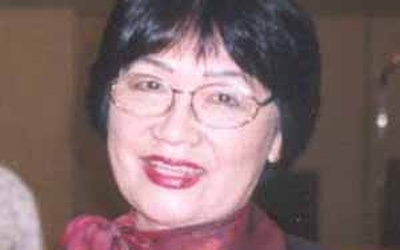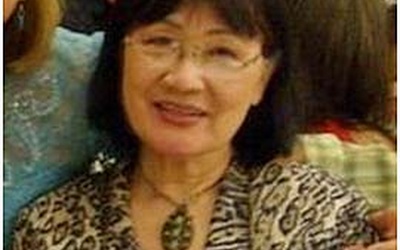
Emi Kasamatsu
Emi Kasamatsu is a Paraguayan Nisei, researcher on Japanese immigration to Paraguay and the Americas. He has published two books on the subject and other publications, such as Discover Nikkei and INRP from the Japanese American National Museum in Los Angeles, USA.
He has given several conferences at the JOCHI and Nanzan Universities in Japan and the UCLA in the USA and at the Pan-American Nikkei Conventions in about ten countries and at the Memorial of the Americas in Brazil, on immigration issues and the Nikkei in Latin America.
She has a Bachelor of Arts and a Master in Gender and Development from the National University of Asunción, a Post Graduate Degree in Governance and Leadership at the International Institute of Governance of Catalonia, Spain, in Research Methodology and a Diploma in Social and Solidarity Economy at REPEM.
Last updated April 2014
Stories from This Author

La ventaja y desventaja situacionales de los japoneses y nikkeie en el Paraguay
Jan. 6, 2009 • Emi Kasamatsu
Existe un hilo conductor entre los japoneses y sus descendientes a través del vocablo SEI , como issei, nisei, sansei, yonsei, gosei, cuando los lazos sanguíneos y el generacional marcan claramente esa distinción. De esta manera dicen: yo soy nisei, yo soy sansei y con orgullo de ser descendientes de los japoneses, sobre todo en las Américas. Existe un lazo indisoluble de consaguinidad y una ligadura que los antecesores han transmitido como herencia cultural – especialmente las costumbres y su …

Los Festejos por los 100 años de la inmigracion japónesa en el Brasil
Sept. 9, 2008 • Emi Kasamatsu
El 18 de junio del 1908, a bordo del barco japonés Kasato Maru, arribó al puerto de Santos el primer grupo de 781 inmigrantes japoneses al Brasil y desde entonces han pasado 100 años. En sucesivas llegadas ingresaron más de 250,000 personas que se multiplicaron hasta la cifra actual de 1.300.000 nikkei de hasta sexta generación. Siendo al principio trabajadores contratados en calidad de colonos para las plantaciones de café, llegaron a desarrollar importantes aportes a la agricultura, con la …

Simposio Internacional Presencia Japonesa en la America Latina
June 18, 2008 • Emi Kasamatsu
En un predio donde la modernidad y el buen gusto se conjugan armoniosamente en toda su extensión se encuentra el Memorial de la América Latina. Sus construcciones monumentales fueron diseñadas por el famoso arquitecto Oscar Niemeyer. Es un conjunto de siete edificios en un área de 84 mil metros cuadrados, construido por el Gobierno del Estado de San Paulo, Brasil, con el propósito de promover la integración entre los pueblos por medio de la cultura. En el auditorio principal con …

Antecedentes históricos de la situación de desventaja de los orientales y los japoneses en la América Latina y Paraguay
March 11, 2008 • Emi Kasamatsu
A principios del siglo XIX, en víspera de la abolición de esclavitud de los negros traídos de África para la plantación de caña de azúcar en el Caribe, los dueños de estos cañaverales empezaron a buscar una mano de obra barata y eficiente y la vez dócil en el manejo y control y se buscaron entre los asiáticos. En los años treinta cuando la esclavitud estuvo totalmente abolida, según Evelyn Hu-de Hat en las colonias europeas de Guayana holandesa, británicas …

La necesidad de una integración cultural efectiva de los Nikkei con la sociedad mayoritaria en donde vive
Feb. 20, 2008 • Emi Kasamatsu
El tema de la globalización trajo aparejada la valorización de la multiculturalidad en el escenario mundial y la aceptación de la palabra “multiétnico” en vez de la utilización discriminatoria de la división en razas y color. La mayoría de la población en el mundo trata de vivir en el presente mediante la asimilación de las diferentes culturas que el medio de comunicación y el movimiento poblacional facilitan al conocimiento y al mismo tiempo a su acercamiento. Sin embargo, pareciera que …

Experiencia de vida de una nikkei paraguaya
Nov. 20, 2007 • Emi Kasamatsu
Nací en el medio de cinco hermanos en Paraguay. Mis padres me llamaban "ojimesama (princesita)" quizás por ser la más callada, por mis afinidades a las bellas artes y por ser delicada y frágil. Razón por la cual, no tenía vos ni voto en las decisiones familiares. Siendo ya una adolescente viví en la capital paraguaya e ingresé a un colegio de niñas, de renombrada trayectoria de la capital, y a medida que pasaba el tiempo me di cuenta que …

Discriminación y exclusión social y acceso a la política de los Nikkei en las Americas*
June 19, 2007 • Emi Kasamatsu
Según la Ley de Inmigración del año 1903, en su Articulo XIV prohibía la entrada de inmigrantes negros y amarillos en el Paraguay. En esta misma situación estuvieron los países como Guatemala, Venezuela y Uruguay. A este respecto el historiador paraguayo Carlos A. Pastore dijo: “Mientras que otros países abrieron sus puertas a nuevas inmigraciones, Paraguay cierra su puerta al desarrollo. Según los estudiosos de inmigraciones de raza amarilla, esta postura anti-asiática tuvo que ver en el conflicto americano que …

Características peculiares de los Nikkei del Paraguay. Estudio comparativo con los Nikkei de las Américas
June 6, 2007 • Emi Kasamatsu
El inicio del nuevo milenio que por cierto ya pasaron siete años, parecería que las cosas iban a cambiar. Sin embargo, el mundo sigue convulsionado y se acentúa cada vez más la corrupción, recrudece la crisis económica, crece la violencia y la pobreza alcanza sus niveles más altos en la región en un 60%. Esta maraña de complejidades ocurre en la mayoría en los países de América Latina y en forma particular el Paraguay. Sin embargo, es interesante notar que …

La identidad Nikkei y la conexión entre los jóvenes Nikkei de las Américas
May 22, 2007 • Emi Kasamatsu
Indudablemente la identidad entre los japoneses y los Nikkei nacido en nuestro continente difiere sustancialmente. Los primeros mantienen en lo posible su identidad japonesa y procurando no deteriorar esa forma cultural de vida. Mientras que los nisei y sansei trata de interaccionar con la sociedad mayoritaria comenzando en los colegios, universidades y luego en el ámbito laboral y social. Los Nisei llevan en sí dos mundos, dos identidades, una japonesa y la otra mitad el país donde nació y vive. …

El problema generacional entre los Nikkei del Paraguay
May 9, 2007 • Emi Kasamatsu
Los japoneses que llegaron al Paraguay desde el año 1936 - 1941, es decir durante la época anterior a la Segunda Guerra Mundial, prácticamente quedan sólo los que vinieron jóvenes y niños en La Colmena. Sin embargo, la influencia ejercida por estos primeros inmigrantes hacia sus descendientes era y sigue siendo significativa y, que todavía sigue vigente ese eslabón ya desaparecido del alma japonés de la época posterior a Meiji, permanece entre los japoneses y Nisei de La Colmena, caracterizado …



